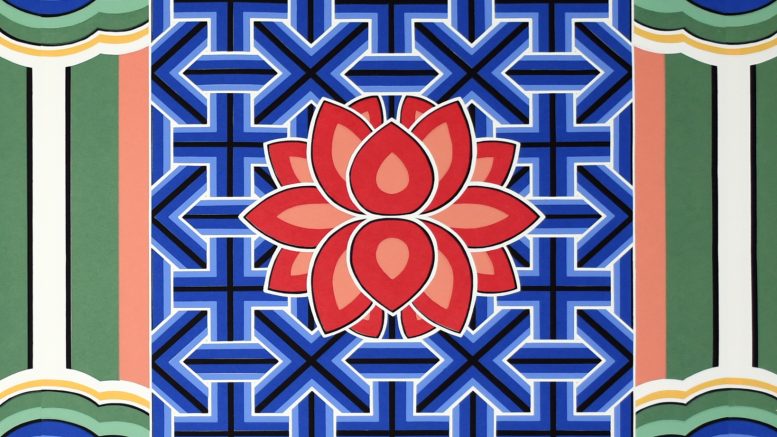This Friday, Toronto-based artist Victoria Day will unveil her latest exhibition, Two Ways, in Winnipeg’s Martha Street Studio. The show exhibits Day’s mirrored renditions of traditional Korean art, made to reclaim her heritage and explore what it means to be a visible minority in Canada.
Day was born to a Korean mother and a British Canadian father in England, but she spent most of her life in Canada without being in touch with Korean culture. Her experience as a visible minority in a White community was anything but easy.
“I grew up in entirely White neighbourhoods. In elementary school, I was in a neighbourhood where it was predominantly Polish and Ukrainian,” said Day.
“My brother and I were the only kids in the school, not in our grades, that had black hair. It was a lot. I was ‘China girl’ for the first two weeks.”
“It took until COVID for me to actually start unpacking what it means to be in the diaspora in Canada, but then also to be a visible minority, and then also to be mixed, because there was such a rise in anti-Asian sentiment here, Day explained. “That really was the catalyst for a large shift in my practice and what it was about, and now it’s a comfortable way for me to connect to my heritage.”
For Two Ways, Day created mulberry paper screenprints based on Korean dancheong, which are patterns typically used to decorate the roof structures of temples and palaces. Dancheong is an art form that dates back centuries, and it prominently features bold colours such as blue, red, yellow, white and black.
However, Day wanted to add her own twist to the tradition to reflect her experience as a half-Korean Canadian.
“Everything in the show is displayed in a way where the viewer is forced to use a mirror to properly view it, or to view an aspect of it. There is also a large piece where there’s a mirror involved with the piece itself,” Day said.
“If you have any sort of dysphoria in terms of your body, not just culturally like it is for me but in any sort of way, the mirror becomes an interesting object where it is a love-hate relationship, and it’s an interesting tool to examine the difference between how you see yourself and how other people see yourself, and how you are internally versus externally.”
Lastly, Day reflected on how art can be a therapeutic tool for her to connect with her roots. For example, she pointed out that the meticulous process of dancheong affirmed her cultural identity, and that perhaps her Korean heritage drew her to such detailed, labour-intensive work.
“It’s very cathartic. I think because the work is so personal to me. It is a benefit, and it is necessary that I take the time to make it because it allows me to process the idea [and] the emotion behind the work while I’m working on it so that by the end of it, I can potentially talk about it,” said Day.
The opening reception for Two Ways will take place at 11 Martha Street at 5 p.m. on Sept. 5 with an artist talk and demonstration on the following day at 1 p.m. The exhibition will conclude on Oct. 10, 2025. Admission is free and open to the public. Follow Victoria Day on Instagram at
@artistvictoriaday.


